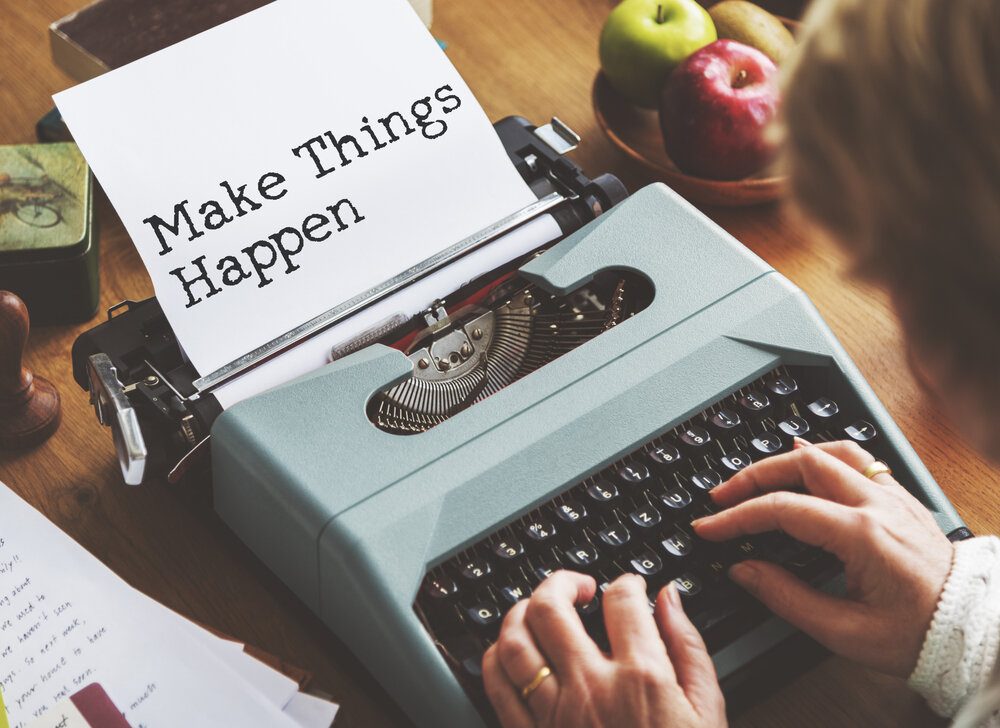
Let me repeat what Braden said.
“The moment we pray for something acknowledges that that ‘something’ doesn’t exist.”
We can start imagining the feeling of rain and the smell of it as it hits the dry soil. We can learn to cast our heart’s intentions or more enriching experiences and then envision ourselves experiencing the outcome with all our senses. For intentions to work well and fast, all our senses have to be involved in the visualization of the intended outcome.
Out of Focus
In 1980, John Lennon released what would be his last album, Double Fantasy, before his untimely death in New York.

In the album is a song entitled “Beautiful Boy (Darling Boy)”, which Lennon wrote for his son with his wife Yoko Ono. Part of the lyrics goes:
Before you cross the street
Take my hand
Life is what happens to you
While you’re busy making other plans
Those last two lines are particularly relevant to “being in the now” and living with intent. It summarizes the situation we sometimes find ourselves in when we become too caught up with our plans, our worries for tomorrow, as well as our regrets because of the past.
Worries, regrets… These are keeping us from focusing on the present.
Chinese philosopher, Lao Tzu, has a famous quote that came to mind.
“If you are depressed you are living in the past.
If you are anxious you are living in the future.
If you are at peace you are living in the present.”
We ruminate on past decisions and the “what ifs” and thus end up miserable, stressed, and out of focus from our goals. Our mind is blurry and our heart becomes weak, and so, coherence does not happen.
Mary Poffenroth, a Biological Science lecturer at San Jose State University, scientist, TEDx speaker, and Fearologist (yes, it’s a profession), said in a podcast interview that the things we call “stress” in our everyday lives are actually “fears”. Whenever we say, “I’m so stressed!” We are actually afraid. [1]
According to Poffenroth, we have two major types of fear: Factual and Fictional fear.
Factual fears are caused by actual threats to our life, happening in a shared reality and in the moment. That’s when our fight or flight response can shut down unnecessary processes in our body to focus on bypassing the danger. An example of this is our body shunting the delivery of blood to some non-essential systems and focusing it on our muscles to increase strength and agility. [1]
On the other hand, fictional fears are the ones that might have a nugget of truth to them but are often made up or hyperbolized in our heads. An example of this is the fear of getting into an elevator because we think it can malfunction at any moment. [1]
When our stress response stays on hyperdrive because unnecessary signals from fictional fears cloud our objective judgments, our body loses the ability to take care of other processes that are essential to our everyday functions.
“There’s no cure for fear. But we can change that relationship and change that story around their fear so they can start living a better life with fear,” Poffenroth said.
And This Means Keeping the Balance
Driving Poffenroth’s point on “living a better life with fear” even further is that we can also practice avoiding driving ourselves nuts with positive psychology. Sit with what is and be fully present without thoughts and emotions.

Difficult experiences, in moderation, induce positive actions. Some levels of stress can propel us towards making a positive change in our lives. Experiencing and reflecting on stress (or fear) encourages us to examine our beliefs which in the end, becomes the catalyst for change. [2]
By keeping the balance between stress and ease, we get a better understanding of our choices, thereby, leading us to have more specific and tangible intentions to achieve our desires.
But we need to remember, although our mind’s capabilities are amazing, it is still very much finite.
Ruminating on “could haves” and “what ifs” can drive anybody to a tipping point. It can induce or exacerbate illnesses, affect our work performance and relationships. Furthermore, a stress response that is constantly turned on will lead, over time, to high levels of cortisol and thus to chronic incoherence between heart and mind.
The solution is not being a person with a complete absence of fear. Negative emotions and experiences are normal. But we do have a choice to discern which stressors are actually more worthy of a response and how we want to respond. We are accountable for our reactions and that is part of what intention continues to teach us. We can intend to channel our energy, focus, and time to what or who is present and most valuable to us.
Starting the Year Right
The beginning of the year is an ideal time for us to reflect on what is important and determine what our intentions are so we get more aligned with that.
Let’s envision the intended outcome by taking the time to create a vision board and assess what thoughts and beliefs might be in the way between us and that outcome.
Get together with a colleague, friend, or loved one to transform your intended results into more powerful beliefs to enrich your vision with strong images and emotions.
I leave you with this:
“The world is awaiting your gift – all you have to do is show up with the right intention.” – Lewis Howes
Sources:
1. Ward, Alie, and Mary Poffenroth. “Fearology.” Alieward.com.
2. Eisler, M., When Trendy Stress-Management Advice Doesn’t Help You, Try This, Aug. 30, 2018